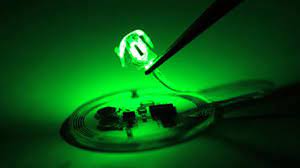
Breaking News
We Americans Need to Dig Deep into Historical Perspective
 A timeless clip of Michael Burry explaining how he used credit default swaps...
A timeless clip of Michael Burry explaining how he used credit default swaps...
 The next financial crisis won't start in a bank lobby. It's already brewing in the market
The next financial crisis won't start in a bank lobby. It's already brewing in the market
Top Tech News
 This tiny dev board is packed with features for ambitious makers
This tiny dev board is packed with features for ambitious makers
 Scientists Discover Gel to Regrow Tooth Enamel
Scientists Discover Gel to Regrow Tooth Enamel
 Vitamin C and Dandelion Root Killing Cancer Cells -- as Former CDC Director Calls for COVID-19...
Vitamin C and Dandelion Root Killing Cancer Cells -- as Former CDC Director Calls for COVID-19...
 Galactic Brain: US firm plans space-based data centers, power grid to challenge China
Galactic Brain: US firm plans space-based data centers, power grid to challenge China
 A microbial cleanup for glyphosate just earned a patent. Here's why that matters
A microbial cleanup for glyphosate just earned a patent. Here's why that matters
 Japan Breaks Internet Speed Record with 5 Million Times Faster Data Transfer
Japan Breaks Internet Speed Record with 5 Million Times Faster Data Transfer
 Advanced Propulsion Resources Part 1 of 2
Advanced Propulsion Resources Part 1 of 2
 PulsarFusion a forward-thinking UK aerospace company, is pushing the boundaries of space travel...
PulsarFusion a forward-thinking UK aerospace company, is pushing the boundaries of space travel...
 Dinky little laser box throws big-screen entertainment from inches away
Dinky little laser box throws big-screen entertainment from inches away
 'World's first' sodium-ion flashlight shines bright even at -40 ºF
'World's first' sodium-ion flashlight shines bright even at -40 ºF
Dissolvable implant kills pain by cooling nerves – no drugs required

The experimental device is being developed by a team led by Northwestern University's Prof. John A. Rogers. It has already been tested on rats, with promising results.
Made mainly of a biodegradable, biocompatible elastomer, the soft and flexible implant takes the form a thin strip which is 5 mm wide at its widest point, and is about as thick as a piece of paper. In a surgical procedure, one end of it gets wrapped around the peripheral nerve that needs to be temporarily silenced. The device is linked to a pump located on the outside of the patient's body.
Whenever the person starts feeling pain in the affected area, they use the pump to separately send a liquid coolant and nitrogen gas into the implant. The coolant is called perfluoropentane, and is already medically approved for use in inhalers and as an ultrasound contrasting agent.
Within the device, the coolant flows through one microfluidic channel, while the nitrogen flows through another. When the two both flow into a shared chamber and mix together, the nitrogen causes the coolant to rapidly evaporate, producing a localized cooling effect. That effect numbs the nerve, causing the pain to cease.
Of course, if the nerve were to get too cold, it could be permanently damaged. In order to keep that from happening, an integrated sensor continuously monitors the temperature of the nerve. If it starts getting excessively cold, the flow rates of the coolant and nitrogen are reduced accordingly.

 The AI money machine!
The AI money machine!

